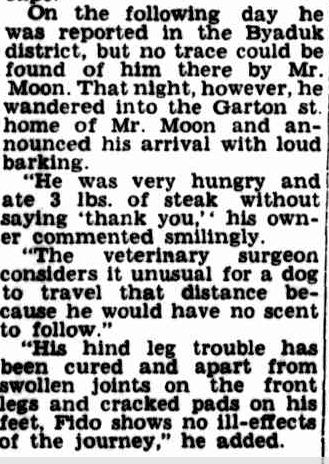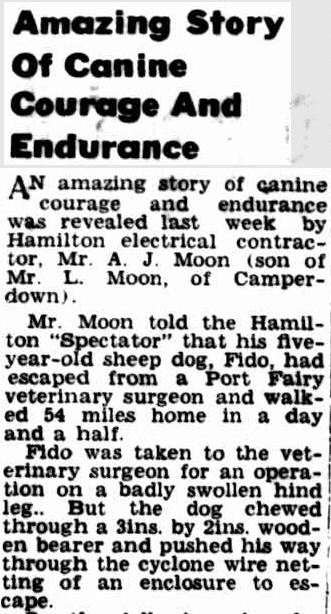Summer fashion is about keeping cool but spare a thought for the women of the 19th century. Western Victoria is at the bottom of mainland Australia yet that makes little difference once summer comes, with temperatures reaching 40 degrees on some days, even in the far south-west. Imagine arriving from England in February, often the hottest summer month, and having to adapt to heat never experienced before, whilst dressed in inappropriate clothing.
Clothes found in the shops came from overseas made from materials unsuited to the Australian climate. Throw in a crinoline, corset, petticoats, bloomers, boots and it all made for an uncomfortable summer. Eventually, women did shed some layers but it did take time.
This advertisement from the Portland Guardian and Normanby General Advertiser is from 1842, early days of the colony’s settlement. James Gladwell was due to take possession of a range of summer clothing fresh off the boat from England. For those that did not want clothing, they could always buy a framed print of “His Majesty George the III, hunting”
In 1844, a Pardessus, a type of coat, was a “most useful appendage to a lady’s outdoor costume”. Italian taffeta was popular and pink, blue and violet were fashionable colours.

Fashion reports cam from England and was for the wealthier woman, with much of the clothing too impractical and expensive for the average pioneering woman. The following article is about June fashions (English summer) and published in September 1849 for the Australian summer.


In 1856, a visit to Miss Reed on Main Road, Ballarat was a must for the latest summer clothing from the Fashion houses of Paris and London selling at a range of prices.
The following sketches are from an article from the Illustrated Sydney News of 9 December 1876 subtitled “Seaside Dress and Bathing Costume”
The accompanying description of the outfit third from the left is below:
For the ladies of Horsham in November 1889, the news was that a cord loop on the end of a parasol was a fashionable accessory for summer 1889. Cashmere was popular as was the “Greek polonaise” dress and mousseline delaine, a material which was taking the place of nun’s veiling.
In 1892, the Portland Guardian‘s regular column “World of Fashion” reported summer fashions as “likened to a flower garden in full bloom”. A dress in peach blossom striped silk perfect for an afternoon by the water.


WORLD OF FASHION. (1892, December 16). Portland Guardian (Vic. : 1876 – 1953), p. 2 Edition: EVENING, Supplement: Supplement to the Portland Guardian.. Retrieved November 25, 2012, from http://nla.gov.au/nla.news-article65441419
During a New Year’s heat wave, the Williamstown Chronicle argued that the summer fashions were unsuitable for the climate and it was time for clothing specifically made for the conditions.

A bathing costume from 1894.
Voile was a popular material for summer 1904. This dress was brown, yes brown, but there were varying shades of brown such as tabac and earth. Where did the blooming flower garden go?

A lady’s blouse from 1909. Patterns were available by mail order from M.Thorp & Co. of Collins Street, Melbourne. Horsham ladies could get the same look like those from the city.


A lady wouldn’t want to walk too close to a horse in this hat.
Another pattern from M.Thorp & Co. This dress is from their 1911 range.


A hat is an important part of a summer outfit in Australia and in 1912 wide brims were in.

It gets hot in Horsham and in 1913, the Horsham Times was offering tips on cool clothing. Wool was too warm while silk was the coolest of materials. The advice to ladies was to put their black clothes away until winter and bring out their white attire.
A bathing costume from 1913.
More tips on keeping cool, this time from The Argus of 1913. The “Women to Women” column advised not to wrap babies in blankets during summer and young children should be dressed in fewer clothes. “Women themselves have realised the comfort of the scanty clothing that they have been wearing during the last two or three years. It is only a very old-fashioned woman nowadays who ever wears two petticoats”
The Port Fairy Gazette of 19 January 1914 advertised a pattern for a Ladies’ Bathing Gown.

Fur trimming was popular in the summer of 1916. Really.

This is a great photo from the State Library of Victoria’s collection. The ladies are on Sorrento beach, Victoria.
The following dress was an English design. The article from The Argus of 27 August 1919 notes that it would have to be adapted to suit the Australian summer with a longer sleeve needed to prevent burning.





Summer fashions from 1924.

Get the knitting needles out and whip up this royal blue surf suit made from four ply wool.


JUST SEE What We Have Secured FOR YOU… (1935, August 31). The Australian Women’s Weekly (1933 – 1982), p. 47 Section: THE AUSTRALIAN WOMEN’S WEEKLY HOME MAKER. Retrieved November 25, 2012, from http://nla.gov.au/nla.news-article52247098
An earlier article from the Horsham Times of 1913, proclaimed wool too warm for summer wear. Twenty-two years later, designers had learnt the secret of sheep – wool really is cool. Good for the sheep farmers of the Western District and Wimmera too.
Prints were everywhere in the summer of 1936 and I mean everywhere. Not only were there print dresses and blouses, but also bags, belts and gloves. Not just floral prints but also animal prints, musical notes and even fish.


Let’s not forget summer shoes. Shoes from 1939 were metallic, mesh and lace up.
Also from 1939, news that cotton playsuits could double as swimsuits. There were also towelling two piece numbers and woollen swimsuits. Also, just for those who wanted an even tan, boned tops, that stayed up even when the straps were slipped off the shoulder.
Beach outfits from the 1940s.
1940
1941

Summer play togs gayer than ever… (1941, November 15). The Australian Women’s Weekly (1933 – 1982), p. 23 Section: Fashion Portfolio. Retrieved November 27, 2012, from http://nla.gov.au/nla.news-article47482941
1945
WW2 was over and cotton was in short supply but it had taken a step up the hierarchy of fabrics. Not just for tea towels or cheap knock-about frocks, cotton was being used for “finer clothes”.

American fashion houses, set up after WW2, were sending their beachwear Australia’s way in 1947, even those made from plastic coated aluminium yarn.
Strapless swimsuits were fashionable in 1949 as were pedal pushers, although judging by the photo which accompanied the article, I’m not sure why. But as the article suggest they were perfect for those with “not too slim” or “not too shapely” legs. Tan, caramel, navy and black were popular colours.


What every girls needs, a swimsuit that doubles as a cocktail dress!

Corsets were back in 1956, if only for swimsuits. A relief for the writer of the “Woman’s Page”, who was glad to see an end of, she thought, swimsuits looking like a couple of handkerchiefs knotted together.











































































































You must be logged in to post a comment.